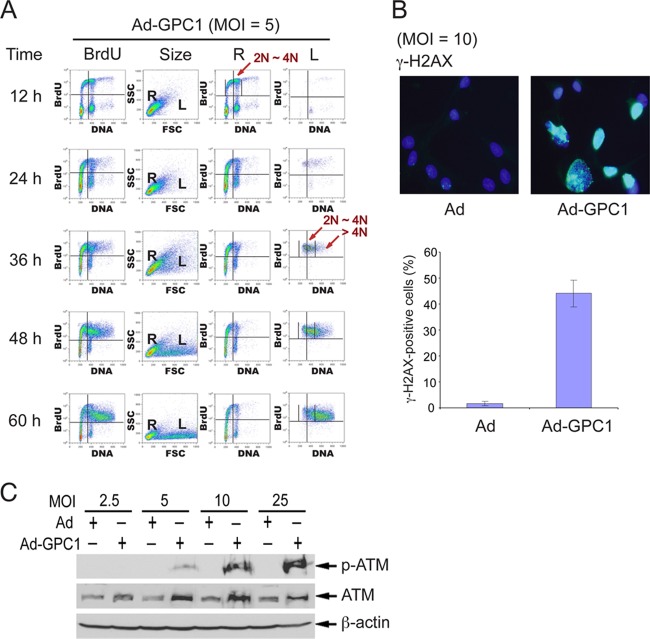Fig 3.
Expression of GPC1 induces DNA rereplication during S phase and DNA damage. (A) Time course. U87-MG cells were infected with GPC1 adenovirus at an MOI of 5. BrdU pulse-labeling of the cells was carried out at different time points as indicated after adding adenoviruses. The DNA replication activity of the cells was analyzed by flow cytometry after BrdU immunofluorescence staining and DNA staining by propidium iodide (PI). The results indicate that GPC1-induced DNA replication begins in diploid rather than tetraploid cells. For column designations and plot axes, see row designations for Fig. 2. (B and C) U87-MG cells were infected with control or GPC1 adenovirus for 48 h. (B) Immunofluorescence for γ-H2AX, a molecular marker for double-stranded DNA breaks (DSBs). The nuclei were counterstained with DAPI. Each bar represents the mean ± SE from three independent experiments. (C) Immunoblotting for phospho-ATM and total ATM. β-Actin was probed as a loading control. The results show that expression of GPC1 induces double-stranded DNA breaks and activates ATM-mediated DNA damage checkpoint signaling.

